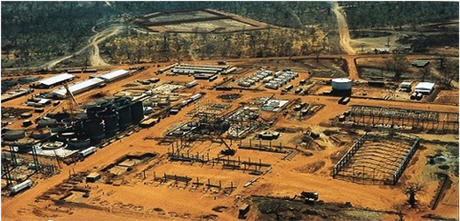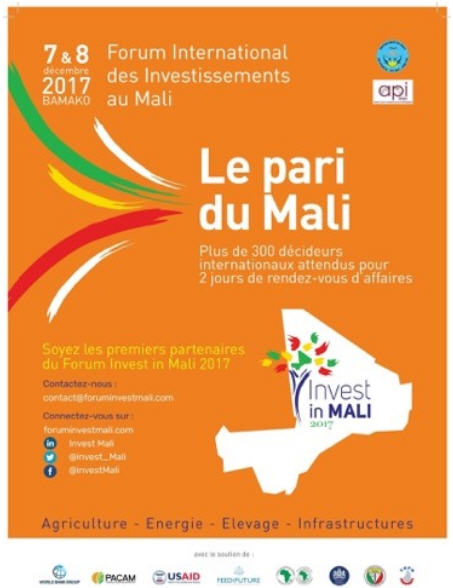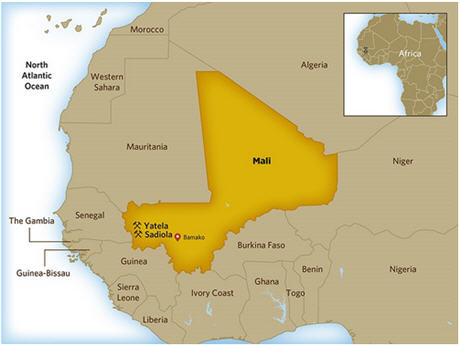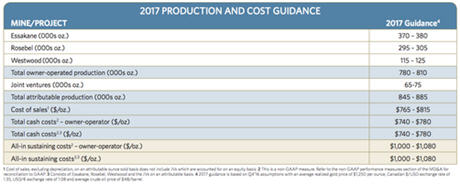Mali's gold exports are falling, and new discoveries aren't enough to make up for the loss of its giant legacy mines, where production is already dead or winding down, and the fate of one of the biggest of them all—Sadiola—now hangs in the balance.
The world-class Sadiola gold mine needs an investment of $380 million to keep it open for
another 10 years, accessing 3.4 million ounces in reserves.

IMG URL:
https://cdn.oilprice.com//images/tinymce/Mali0410A.jpg
But there are signals that
negotiations over the deal to extend the productive life of Sadiola by at least another decade have stalled within the government, putting the investment at risk.
The reason for the stalled negotiations remain unclear, but what's at stake for Mali is as visible as ever: Sadiola is crucial for Mali's reputation as one of Africa's top three gold producers. Next to this, it is a crucial lifeline for new jobs and much-needed state revenues.
How the stalled negotiations over Sadiola are resolved could be a litmus test for a government
heading into elections next year—and a government that relies heavily on foreign aid, while working hard to create an attractive investment climate.
The investment climate in theory has improved immensely in recent years, but putting this into practice has proved to be challenging in this terrain.
So far, it's been moving in the right direction. But many industry eyes will be on the Sadiola deal ahead of the Invest in Mali Forum 2017, which will be
held in Bamako in early December and supported by the World Bank.

IMG URL:
https://cdn.oilprice.com//images/tinymce/Mali0410B.jpg
Sadiola—A Legacy with a Lot More Gold to Give
The
Sadiola mine is a joint venture between Canadian miner IAMGOLD (NYSE:IAG) (TSX:IMG) with 41 percent, operator AngloGold Ashanti (NYSE:AU) with 41 percent, and the Government of Mali with 18 percent.
Located in southwest Mali near the border with Senegal in a remote part of the Kayes region, the giant Sadiola permit covers 302 square kilometers.
The existing plant was built to process soft rock, or oxides, and the soft rock is now running out. But Sadiola has much more to give with the massive hard-rock, or sulphides, deposit that lies beneath the depleted oxides. This is now a ‘hard rock' story, and IAMGOLD and AngloGold Ashanti are keen to invest in a major plant modification that would enable hard-rock processing.
The Sadiola mine has had a major, positive economic impact on Mali since it opened in 1997, following liberalization of the sector. That same year, gold had already become the primary source of Mali's foreign currency. By 1999, it had become its biggest export. By 2001, Mali had risen to become the third top gold producer in Africa.
It wouldn't have happened without Sadiola—one of three key mines behind Mali's preeminence as an African gold giant. The other two mines are Morila and Yatela.

IMG URL:
https://cdn.oilprice.com//images/tinymce/Mali0410C.jpg
The Morila mine, owned by Randgold Resources, AngloGold Ashanti and the government, is scheduled to be
closed down in 2019, after producing over 200 tonnes of gold since it opened in 2000.
Yatela—a joint venture between IAMGOLD with 40 percent, operator AngloGold Ashanti with 40 percent and the Government of Mali with 20 percent—has already reached the end of its productive life, and closure activities continue.
Originally, Yatela's planned mine life would have seen it closed in 2007. But the exploration efforts of IAMGOLD and AngloGold Ashanti extended the life of the mine by an exceptional seven years. The partners continually opened up additional economically exploitable deposits at Yatela, pushing the closure back repeatedly.
But Yatela is much
more expensive to exploit than Sadiola, which has been producing gold at a lower total cash cost.
If negotiations fail over the terms necessary to invest in Sadiola's ‘hard rock' gold, much could be lost.
What's at Stake for Mali
Mali's industrial gold production rose negligibly from 2015 to 2016, with 2015 coming in at 46.5 tonnes and 2016 just squeaking past at 46.9 tonnes,
according to Reuters. But total gold exports fared even worse, falling from 70 tonnes to 67 tonnes during that same period.
With Morila winding down, Yatela closed, and Sadiola stuck in apparent bureaucratic purgatory, the next couple of years will be an uphill struggle to maintain production—even with new discoveries.
Mali's state revenues from mining companies rose only 1 percent last year—but it wasn't due to an uptick in exports; rather, gold prices saw a bit of a bump.
Indeed, industrial gold production will fall this year to 45 tonnes, with no new mines slated to come online until 2018—if all goes well.
With gold representing about 25-30 percent of government revenues, getting more out of a giant legacy mine like Sadiola is critical.
So, what's at stake? Nearly
56,000 tonnes of ore containing 3.4 million ounces of gold. And these are proven and probable reserves, which already have a demonstrated economic viability.
Though the ‘soft rock' is nearing depletion, the ‘hard rock' is bursting at the seams, and Sadiola is ready to fast-track its expansive development. But getting past the politics in Mali is no easy task—even when you have a track record of extending the life of another legacy mine—Yatela—for seven years.
Sadiola has been operating for 20 years. Because the soft rock is being depleted, production has dropped from 600,000 ounces in 2000 to less than 200,000 ounces today.
But it could go for
another ten years if IAMGOLD and AngloGold Ashanti are given the green light to invest some $380 million to process the hard rock.
Not only government revenues would increase, the investment would create additional jobs for Malians.
Sadiola, with soft-rock production slowing, is now employing around 1,000 people, 93 percent of whom are Malian nationals. If Sadiola's hard-rock expansion plans are green-lighted, it would not just protect, but expand those jobs for a country that is struggling to keep its growing numbers of young people gainfully employed.
And for Mali, this means much more than putting food on the table. For the government, it means security. With over half of the Malian
population under the age of 35, and that figure expected to double by 2030, there is a
direct link between unemployment and crime or terrorism. And when criminal-terrorist groups offer money for new recruits, security is increasingly compromised.
Getting the Gold Out
The Sadiola mine is surrounded by some 46 villages and a few hamlets, as well as a mining village created specifically for Sadiola employees, with housing, a medical clinic, recreation facilities, a supermarket, a sewage treatment facility and recreation facilities, among other things.
Water comes from a 55-kilometer pipeline from the Senegal River, providing the villages with drinking water and the mine with water for operations. The site and its surrounding villages are powered using diesel-fueled generators.
Sadiola's expansion project will use existing infrastructure, but also build new infrastructure. The plan is to connect the mine to the Malian power grid, which may also facilitate distribution of electricity to local villages.
But 2018 is an election year, and in Mali, this means uncertainty, especially for the fate of mining deals, but also for the investment climate as a whole.
IAMGOLD, for one, is closely watching the developments, and what they might mean for the investment environment.
In an interview with Oilprice.com, IAMGOLD CEO Stephen J.J. Letwin noted that the “Sadiola mine has been a remarkable success for all stakeholders in Mali for two decades.”
The Canadian giant has
operating mines in Burkina Faso, Suriname, Mali and Canada, and exploration projects in Senegal, Brazil, Mali, Canada and Nicaragua.

IMG URL:
https://cdn.oilprice.com//images/tinymce/Mali0410D.png
While Essakane, in Burkina Faso, is IAMGOLD's biggest mine and its most prolific, Mali was “the birthplace of our company,” Letwin said. “And we will always be committed to exploring opportunities in Mali, and West Africa more generally.”
IAMGOLD did not comment on rumors of a possible deadlock over the Sadiola deal.
To make Sadiola work for Mali and its people, the energy-intensive expansion to access the deep sulphides requires a world-class miner and the right economics. The gold is there, the economics are there from a mining perspective, and the miner has been there successfully for 20 years and is particularly known for an intense focus on mine optimization—but the government, whose representatives are struggling for political capital ahead of crucial elections, is hamstrung.
In the meantime, 3.4 million ounces of gold remain stuck in the hard-rock at Sadiola.
Link to original article:
https://oilprice.com/Metals/Gold/Can-Mali-Maintain-Its-Gold-Mining-Status.html
By Joao Peixe for
Oilprice.com